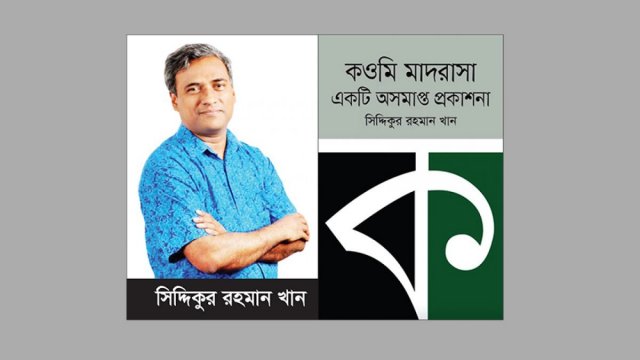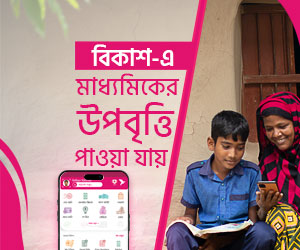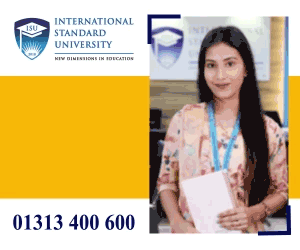Quality of education is greatly compromised at public universities because of the high teacher-student ratio while another batch of student is set for enrolment in these seats of learning only to aggravate the problem.
Teacher to student ratio at some of these universities is more than what it is at primary schools and far above the standard set by University Grants Commission.
Bangladesh Bureau of Educational Information and Statistics’ Bangladesh Education Statistics 2017 that came out in July shows the highest 1:67 teachers to students ratio at a university while at least six others universities have more than 34 students for per teacher.
UGC recommends one teacher against 16 students at science universities while one teacher for 22 students at other universities.
As per the Directorate of Primary Education, teacher to student ratio for primary schools is 1:34.
About one fifth of the public university teachers remain on study or other types of leave along with a dearth of teachers, which affects classroom teaching of students.
Lack of other facilities like libraries and labs is an added problem that takes its toll on the quality of education at public universities, said academics and UGC.
In this background, UGC in its latest annual report placed at parliament in February had proposed deputation of teachers to the new universities with lucrative benefits and reappointment of retired teachers to make up the teachers shortage.
‘There is a shortage of teachers at many public universities,’ UGC chairman Professor Abdul Mannan admitted. ‘It is a reality,’ he said, acknowledging, ‘Due to this, quality of education is compromised.’
Among the general universities, Begum Rokeya University in Rangpur has one teacher against 67 students while the ratio is 1:37 at Islami University, 1:34 at Barisal University, 1:33 at Comilla University 1:32 at Jagannath University, 1:30 at Rajshahi University, 1:25 at Jatiya Kabi Kazi Nazrul Islam University and 1:23 at Jahangirnagar University, though UGC recommends one teacher against 22 students for general universities.
The ratio is 1:63 at Bangabandhu Sheikh Mujibur Rahman Science and Technology University, 1:33 at Rangamati Science and Technology University, 1:30 at Maulana Bhasani Science and Technology University, 1:26 at Hajee Mohammad Danesh Science and Technology University, 1:25 at Noakhali Science and Technology University, 1:23 Pabna Science and Technology University and 1:21 at Jessore Science and Technology University.
UGC recommends 1:16 teacher-student ratio for science universities.
There are 2,64,084 students with 13,072 teachers at 34 public universities excluding National and Open Universities. About 2,700 or one fifth of the total number of teachers are now on education and other leaves, said UGC officials.
‘If you deduct the teachers on leave, the ratio will be higher,’ said a UGC official.
Against this backdrop, the admission tests of public universities will be held in between September 14 November 5.
Universities are set to take in 47,000 students this year and public universities are most coveted by the admission seekers, according to UGC officials.
Public university vice-chancellors’ association Bangladesh Bishwabidyalay Parishad president Professor Harun -Or-Rashid said that students were victim of teacher shortage.
‘Quality education is compromised at the universities facing shortage of teacher,’ said Professor Harun, vice-chancellor of Patuakhali Science and Technology University.
He said that finding qualified teachers was a problem for the comparatively new universities in outlying districts.
He said that many teachers join these universities but they later move to others universities in the cities within a very short time.
The UGC chairman also echoed Harun saying they were putting emphasis on increasing the number of teachers at public universities.
‘We have recommended deputation of teachers to the new universities and appointment of retired teachers at universities on a contract basis,’ Abdul Mannan said.
Universities with more faculties and staffers per student have a good chance of creating an engaged and interactive teaching environment as well as quality teaching in classrooms, academics say.
The observations have been mirrored in the Times Higher Education World University Rankings 2018. The ranking shows that University of Oxford [of United Kingdom] topped the ranking with student-to-staff ratio at 1:11.2.
Student-to-staff ratio for the second ranking University of Cambridge [United Kingdom] is 1:10.9 while the third ranking California Institute of Technology [United States] as TSR at 6:5, the forth ranking Stanford University [United States] has it at 1:7.5 and the fifth ranking Massachusetts Institute of Technology [United States] has it at 1:8.7.
Among the Asian Universities, the ratio for University of Tokyo of Japan is 6.7, Seoul National University of South Korea 12.6, University of Science and Technology of China 8.2, Indian Institute of Science 8.4 and University of Malaya of Malaysia 10.9.
Source:NEWAGE




